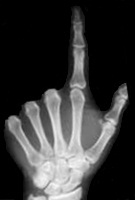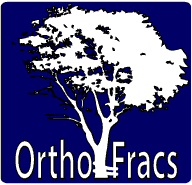Journal Club
March 2010
Results of Internal Fixation of Pauwels Type-3 Vertical Femoral Neck Fractures
Author
Institution
- Multicentre
- North Jersey Orthopaedic institute, Orthopaedic Specialty Associates Fort Worth, Florida Orthopaedic institute
Journal
- Study type
- Retrospective cohort study
- Level IV. (Level III evidence)
- Non-funded
Reviewed by
Dr David Shepherd
MBBS | Senior Accredited Orthopaedic Registrar
Introduction
- Aim
- To evaluate a large
consecutive series of Pauwels type-3 femoral neck
fractures
- learn more about the outcomes and complications associated with the treatment of these fractures
- To assess the performance of various internal fixation devices
- Hypothesis
- Fractures with a higher ‘‘shear angle’’ are more unstable and,
- Therefore have a higher nonunion rate
- Inclusion/Exclusion criteria
- Inclusion
- Pauwels’ 3 femoral neck fractures
- > 70 deg verticality
- Transcervical
- At least 1cm superior to medial aspect of GT
- Exclusion
- Basicervical fractures
- Outcome parameters
- Quality of reduction
- Haidukewych method
- Excellent : <2 mm displacement, <5deg angulation
- Good: 2 to 5 mm displacement, 5 to 10 deg angulation
- Fair: >5 to 10 mm displacemnt, >10 to 20 deg of angulation
- Poor: >10 mm of displacement, >20 of angulation, or any varus.
- Haidukewych method
- Osteonecrosis
- radiographically with Ficat classification.
- Union
- No system documented
Methodology
- X rays reviewed and
fracture verticality measured
- Preoperative radiographs, intraoperative fluoroscopic images and immediate postoperative radiographs
- All surgery within twenty-four hours after presentation.
- Choice of fixation device, the operative approach, and the need for capsulotomy determined by the treating surgeon.
- No method documented for measurement of union
- Ficat classification for osteonecrosis
Results
- Overall 74% united
with no osteonecrosis
- ON in 11%,
- Non-union in 16%
- 1 infected non-union
- Fixation
- Screws. 19% Non-union. 14% ON
- Fixed angle. 8% Non-union. 8% ON
- Parallel screw 12% failure, Cross screw 60% failure.
- Displacement
- 100% union in non displaced
- 16% non-union,
- 12% ON if displaced
- Good-excellent reduction: 14% non union, 12% ON
- Fair reduction: 2/3 non union
- Capsulotomy
- 14% osteonecrosis (2/14) if capsulotomy performed
- 10% osteonecoris if no capsulotomy
- Revision Surgery
- 5 THR for ON, 3 THR for non-union, 2 Hemiarthroplasties
- 3 screws revised to fixed angle device
Discussion
- In this series,
contemporary internal fixation methods for Pauwels type-3 vertical femoral neck fractures had a reasonable union rate (84%) with a
low prevalence of osteonecrosis (11%).
- Still demonstrates that as a group the incidence of these outcomes is high.
- Quality of the reduction and indicator of potential for ON or non-union
- Effect of capsulotomy not ascertained
- Type of fixation device not ascertained
- Higher non-union rate
than for other studies which did not select Pauwel 3 fractures
- Vertical shear predisposes to varus and shortening
Pros of Study
- Defines the outcome of a rare fracture pattern
- Compared various treatment options
- Used a clear method for identifying reduction and osteonecrosis
- Follow up of 2 years
Cons of Study
- Retrospective study
- Inclusion criteria
unclear
- Some patients included pre or post operatively
- Poor exclusion
criteria
- Smoking, DM, steroid use, metabolic or endocrine disorders.
- Outcome parameters
poorly defined
- No description of method of assessing union, which clinicians doing assesment.
- No documentation in method of post-operative plans, weight bearing status
- Loss to follow up patients not included in results intention to treat
- Difficult to draw real conclusions from the results
Take home message
- These fracture patterns must be reduced accurately, in expedited surgery
- Outcome dependent on:
- Accuracy of Reduction
- Type of Fixation (Fixed Angle)
Webpage Last Modified:
13 February, 2011



